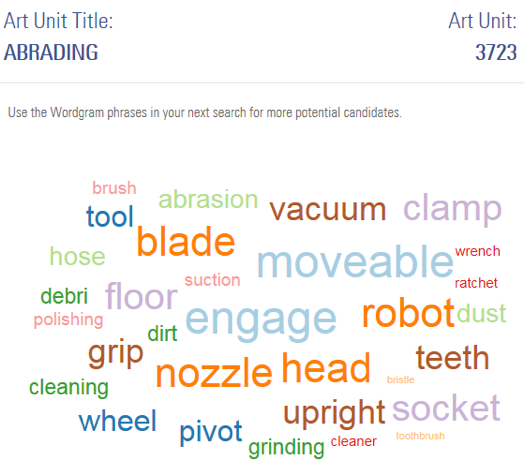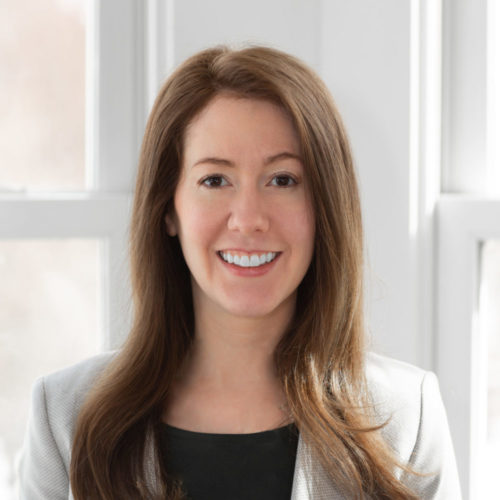 Imagine that you are about to draft a patent application for an invention related to an air filter pad to be inserted within an airflow chamber inside a vacuum cleaner. There are numerous options in terms of how you might characterize and claim the innovation. For example, you might focus primarily upon the context of vacuum cleaner, or a compact dust particle removing system, or even the components of the filter itself. But what you may not be aware of is the full range of your options and the impact your choice will have on the probability and timeline for your allowance.
Imagine that you are about to draft a patent application for an invention related to an air filter pad to be inserted within an airflow chamber inside a vacuum cleaner. There are numerous options in terms of how you might characterize and claim the innovation. For example, you might focus primarily upon the context of vacuum cleaner, or a compact dust particle removing system, or even the components of the filter itself. But what you may not be aware of is the full range of your options and the impact your choice will have on the probability and timeline for your allowance.
The fact of the matter is that there is tremendous variation within the USPTO from one group of patent examiners to another. And that variation is not necessarily limited to art units of examiners drawn from distinct technology areas. For example, patent applications that land in art unit 3681, which handles “transportation, construction, electronic commerce, agriculture, national security and license & review,” have about a 29.8% chance of maturing into a patent. And even if you are lucky enough to be one of the 29.8%, it is likely to take over four years to grant. But get your patent applications into art unit 3688, which the USPTO describes as handling the exact same subject matter as 3681, and your chances of allowance jump up to about 81%, with an average time to issuance of around 2 years.[1] This differential can mean material differences in your overall allowance rates and time to grant.
It would certainly be nice to know why an application is assigned to one art unit over another. The USPTO does publish a detailed Cooperative Patent Classification (CPC) index, complete with examples and explanations for each code.[2] However, there is little public information about the categories of technology handled by each individual art unit. The USPTO’s technology center management page provides vague titles for groups of 5-10 art units.[3] This is unfortunate because the art unit assignment arguably does have some impact upon whether the final examination outcome will be a granted patent or abandonment.
With the launch of the new LexisNexis PathWaysTM online information system, the product development team at LexisNexis® has taken on the task of characterizing the technology handled by every individual USPTO art unit. The PathWays system is designed to help applicants predict which art units an application is likely to be filed before the application is even filed. A unique semantic search algorithm compares user submitted text to weighted key words derived from an exhaustive collection of application documents clustered in each USPTO art unit. For example:

The LexisNexis PathWays solution even provides a word cloud visualization of the “character” of technology handled by each art unit. For example:

Patent professionals can also explore alternate drafting ideas in order to re-characterize an application and facilitate a path to a more appropriate art unit, by utilizing Cooperative Patent Classification (CPC) and United States Patent Classification (USPC) searches included in the LexisNexis PathWays tool. The CPC/USPC searches can be used as an aid to narrow prior art searches.,
LexisNexis PathWays is complementary to a number of solutions comprising the LexisNexis suite of IP Solutions that enable patent professionals to work most efficiently across the patent workflow, including LexisNexis TotalPatent®, LexisNexis PatentAdvisor® and LexisNexis PatentOptimizer®.
Join us April 21 for a webinar to see LexisNexis PathWays in action and learn how it can help you improve the success of your patents. Click here to register.
________________
[1] Data obtained from LexisNexis PatentAdvisor®.
[2] The CPC index can be found here: http://www.uspto.gov/web/patents/classification/cpc.html.
[3] http://www.uspto.gov/patent/contact-patents/patent-technology-centers-management

![[IPWatchdog Logo]](https://ipwatchdog.com/wp-content/themes/IPWatchdog%20-%202023/assets/images/temp/logo-small@2x.png)

![[Advertisement]](https://ipwatchdog.com/wp-content/uploads/2024/04/Patent-Litigation-Masters-2024-sidebar-early-bird-ends-Apr-21-last-chance-700x500-1.jpg)

![[Advertisement]](https://ipwatchdog.com/wp-content/uploads/2021/12/WEBINAR-336-x-280-px.png)
![[Advertisement]](https://ipwatchdog.com/wp-content/uploads/2021/12/2021-Patent-Practice-on-Demand-recorded-Feb-2021-336-x-280.jpg)
![[Advertisement]](https://ipwatchdog.com/wp-content/uploads/2021/12/Ad-4-The-Invent-Patent-System™.png)







Join the Discussion
8 comments so far.
itzhak Yogev
April 17, 2016 03:04 amI must say that the information presented in the post is an amazing proof to something we always felt: that the USPTO provides no patent examination whatsoever, but rather a random pick of rejection or allowance. I can hardly think of any piece of information that is more disgraceful for an agency than showing that its output can be replaced by a lottery.
This also undermines the notion that a good patent prosecutor can get patents to allowance more promptly: it is all a question of luck.
Very devostating.
Anon
April 16, 2016 08:09 amEric,
I concur – the problem is the “gnormous” corporations that are truly multinational and have no allegiance to any one country, and thus are perfectly willing to subvert a system that is, at its heart, aimed internally for the betterment of a single sovereign.
This has a link to the Citizens United mess in that We (the royal we) have provided a voice-to-dollar mechanism for a juristic person who has no allegiance – a juristic nomad if you will.
Eric Berend
April 16, 2016 05:53 amAD (@#5.): …or perhaps, be a “gnormous” corporation and throw 100,000’s of variations on generic BS U.S. patent filings at the USPTO, to muck up and overburden the system with systemic networking effects against everyone but huge companies.
For the software-centric folks, think of this a version of a more strategic, diffuse DDoS attack against the workings of traditional U.S. government patent administration. All those without large fortunes and phalanxes of attorneys at the ready, need not apply.
angry dude
April 14, 2016 09:15 pmBetter way of filing patent application is NOT to file one, or file some generic BS like Mark Cuban’s owned patent on self-balancing board which does not self-balance according to patent application
Night Writer
April 14, 2016 06:27 pmSo, maybe just a paper with some guidance would be good enough.
Benjamin Pezzner
April 14, 2016 05:25 pmThere is little information on differences in subject matter between individual art units because that distinction does not exist. Each art unit in a group of 5-10 is internally called a “work group” and covers the exact same subject matter. The only reason each art unit in such a group is separately distinguished is due to limits on how many examiners can be effectively managed by one supervisor. Once an art unit fills up, an additional art unit will be formed with a new supervisor in order to handle additional examiners. The new art unit will cover the same subject matter as the others in its work group.
Differences in allowance rates and examining time from art unit to art unit are more likely due to the proportion of primary to junior examiners in the art unit, rather than differences in subject matter covered by each group.
Gene Quinn
April 14, 2016 03:02 pmAppearance of…
That is definitely true, but the odd thing is there are other Art Units within 3600 where the allowance rate is in the 80s and 90s. Patent attorneys absolutely must be drafting applications to try and steer into more favorable Art Units, at least until (if ever) the USPTO puts their foot down. It is terribly unreasonable for some Art Units to have below a 10% allowance rate when others have 80% or higher in the same TC.
-Gene
Appearance of …
April 14, 2016 03:00 pmSounds like a great idea, particularly since landing in some art units (*cough* 3600’s *cough*) can often be the “the kiss of death” at present.